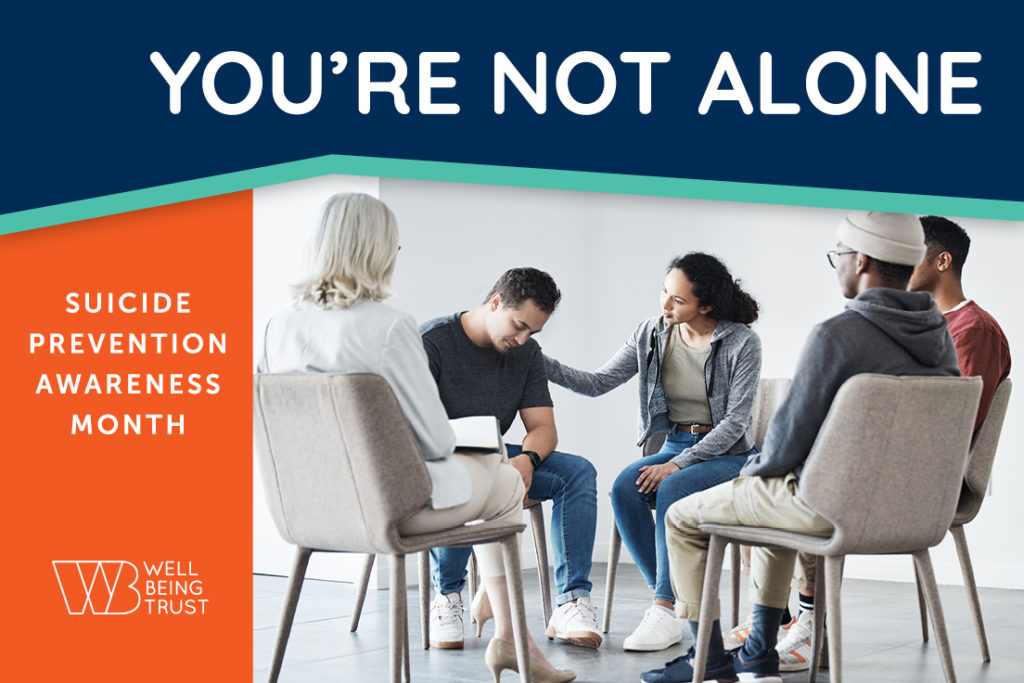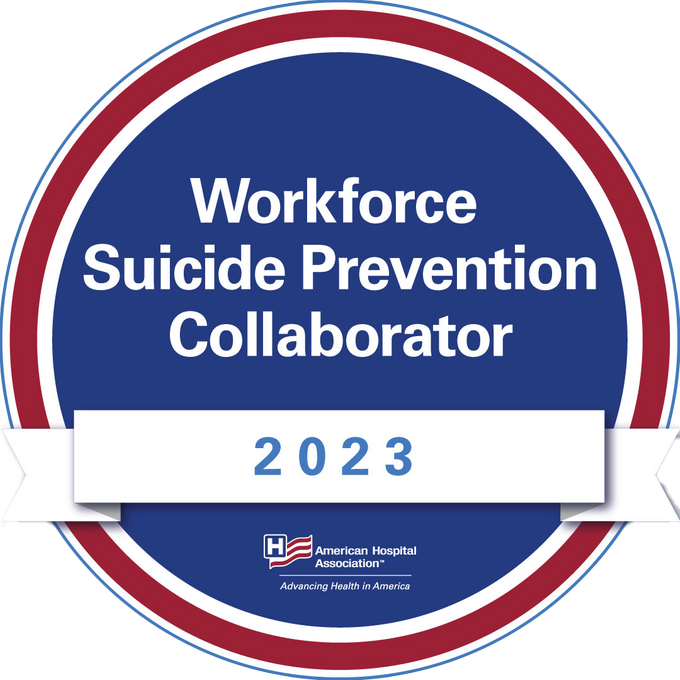September is National Suicide Prevention Awareness Month. It’s time when mental health advocates and community organizations work in tandem to share information – and much-needed hope – with the public regarding suicide.
According to the American Foundation for Suicide Prevention, there are approximately 130 suicides per day in the United States, making it the 12th leading cause of death in the country. A national survey by the Substance Abuse and Mental Health Services Administration (SAMHSA) found that in 2020, over 12 million adults considered suicide, with more than one million actually attempting suicide.
Data from the Trust for America’s Health and Well Being Trust annual Pain In the Nation report – which analyzes trends in “deaths of despair” due to drugs, alcohol, and suicide – showed that:
- In 2020, 45,979 Americans died by suicide.
- The suicide rate in the U.S. has risen 30 percent between 2000 and 2020.
- The demographic that saw the greatest increase in suicides between 2010 and 2020 was children aged 17 and under, underscoring the mental health crisis plaguing America’s youth.
People of all ages and backgrounds can be affected by suicide, but some groups are considered more at-risk than others.
Risk factors and groups with increased risks
There are a number of individual risk factors that have been shown to correlate with an increased likelihood of suicide ideation or suicide attempt. These include a personal or familial history of mental illness and/or substance misuse, hurtful or violent personal experiences like domestic abuse or bullying, and financial or legal/criminal problems. Societal factors such as lack of access to quality healthcare, stigma associated with seeking help or discussing mental health, and access to lethal firearms all exacerbate these risks.
People of all ages and backgrounds can be affected by suicide, but some groups are considered more at-risk than others. Pain In the Nation also reported that suicide rates increased in 2020 among Native Americans/Alaskan Natives, Black, and Latino Americans compared to white and Asian Americans. Military veterans are at a 50 percent higher risk for suicide than those outside of the military, and can experience heightened crises due to the physical and psychological trauma they endured during their service, even many years after returning from duty. LGBTQ youth are more than four times as likely to attempt suicide than their peers, and transgender and nonbinary youth are up to 2.5 times more likely to consider or attempt suicide than their cisgender peers.
Fostering a sense of social connectedness is one of the most effective ways to protect against suicidal thoughts and behavior.
Warning Signs
There are a number of verbal and behavioral warning signs that can be used to identify an individual who is struggling with suicidal ideation, or thoughts or ideas about ending their own life. The following are signs someone is seriously considering a suicide attempt, warranting an intervention:
- Verbal or written comments, including social media posts, about death, dying or suicide.
- Expression of dissatisfaction or disillusionment with life, including statements such as “It would be easier if I wasn’t here”.
- Withdrawing socially from friends, family, or activities that once were sources of joy, i.e. sports or hobbies.
- Sudden increased use of alcohol or drugs.
If you suspect someone you know is contemplating suicide, it is important to take that concern seriously. Ask them how they are doing, and remind them that you are there to support them and help connect them to help if they need it. While it may be uncomfortable to initiate this kind of conversation, explicit words of compassion and support could literally be the difference between life and death.
Fostering a sense of social connectedness is one of the most effective ways to protect against suicidal thoughts and behavior. Having strong connections – through interpersonal relationships as well as to groups, like a school, spiritual organization, and workplace – can help reinforce a person’s sense of purpose or belonging and provide them with a broader network of support in times of crisis.
In conjunction with our personal, individual efforts to prevent suicide, there is also the need for broader systemic changes that address some of the external factors that drive people to despair. The TFAH and Well Being Trust’s Pain In the Nation report outlines a robust series of policy recommendations focusing primarily on suicide prevention and early intervention including:
- Expanding and diversifying the mental health and substance use treatment workforce, including greater investment in workforce development programs and promotion of culturally appropriate services.
- Building sustainable support networks with the Community Initiated Care model, which focuses on training community members to deliver evidence-based interventions in instances of mental health or substance use crisis.
- Strengthening awareness and improving social attitudes towards mental health through positive messaging and education aimed at underserved and at-risk populations.
In alignment with National Suicide Prevention Awareness Month, mental health advocacy organizations around the country are launching campaigns to engage with people in their communities and raise awareness about how we can work together to save lives. The National Council for Suicide Prevention’s Take 5 To Save Lives, 988’s #BeThe1To, and the Department of Veterans Affairs’ Reach Out campaigns all help inform the public about the steps they can take, and the roles they can play, in preventing suicide.
Suicide continues to be a sensitive and complex issue, and one that needs to be addressed with equal parts education and compassion. It’s imperative that those who are struggling know that they are not alone, and that help is available.
If you or someone you know is experiencing mental health issues, addiction issues, or is having thoughts of suicide, use the below resources to find help.
- Call the 988 Suicide & Crisis Lifeline.
- CrisisTextLine Free,24/7 support through text message.Text HOME to 741741 to connect with a trained crisis counselor.
- Contact the NAMI HelpLine Monday through Friday at 1-800-950-NAMI (6264) or helpline@nami.org.
- Contact the Substance Abuse and Mental Health Services Administration (SAMHSA) National Helpline at 1-800-662-HELP (4357) for referrals to treatment centers, support groups, and community mental health agencies.
- American Foundation for Suicide Prevention – Read stories of hope and find ways to help.
- Mental health resources for underrepresented communities from the American Foundation for Suicide Prevention.
- National Institute of Mental Health – Resources and information about a range of mental health issues and treatments.
- Seize The Awkward – View tools and tips on how to start difficult conversations about mental health.
- Teen Line – Teen listeners provide resources, support, and hope to other teens who are struggling.
- The Trevor Project – Learn more about LGBTQ crisis intervention and suicide prevention.
- Active Minds – View mental health resources and education for students.






